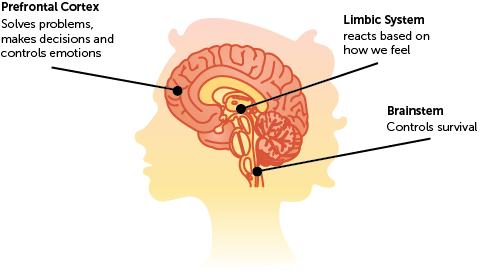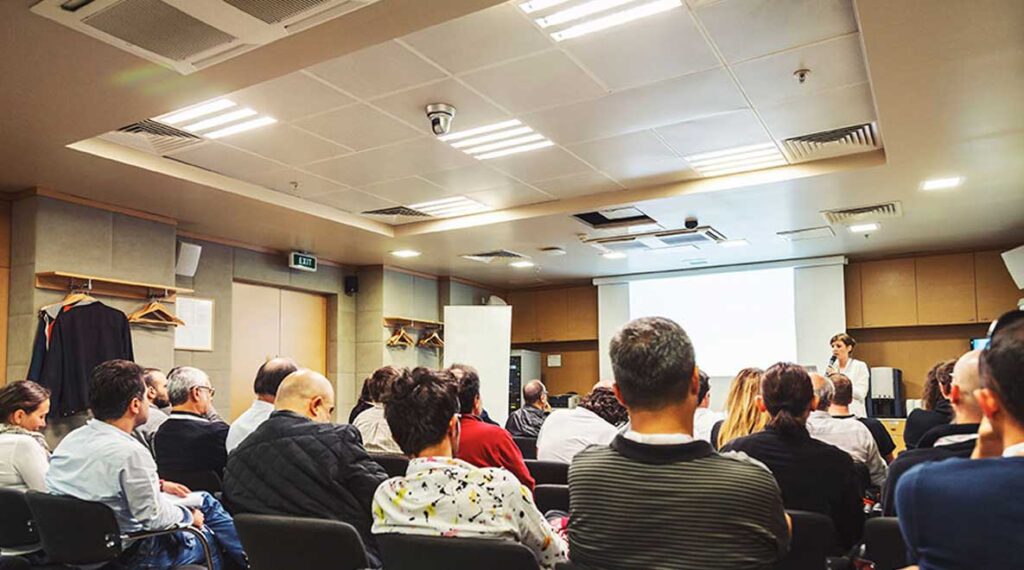Your training approach can make or break your process execution
The reality of information overload, how it affects your employees and how to overcome it.

We get so much information, all day long, that it’s literally eroding our ability to get work done and make good decisions. It’s easy to be exhausted by it. We are bombarded by choices and we can easily access data that both reinforces and refutes those choices. Even the simplest decisions seem to become so complicated that we get stuck. We can’t make a decision, and then we make snap decisions that often seem irrational.
If you’re looking for someone to blame, you could start with Howard Moskowitz.
In the 1970s, Moskowitz was analyzing data on consumer trends and preferences. Based on his research, he determined that (shockingly) everyone doesn’t like the same thing. This revelation led his client, a struggling spaghetti sauce manufacturer, to expand their product line beyond one type of sauce.
After doing a bunch of controlled consumer testing, Moskowitz had determined there were three distinct sauce preference profiles that most people fell into — plain, spicy and extra chunky. The third was most significant because nobody was making extra chunky at the time. He convinced Prego to produce an extra chunky sauce and they almost immediately passed over Ragu as the leader in American spaghetti sauce.
The unfortunate consequence of this revelation is that every food manufacturer has since expanded their product offerings at an exponential rate. Did you know there are 11 different varieties of Ritz crackers?
Is this a problem? You can go to grocery stores around the country and see people standing in front of shelves staring at hundreds of spaghetti sauce options – with a deer in the headlights look. When they finally snap out of it, they grab the nearest, cheapest or prettiest jar and make a run for it.
It’s not their fault. These people are experiencing a true biological phenomenon. It can happen when you’re flooded with information while you’re buying spaghetti sauce, following the news, keeping up with friends on social media or being trained for a new job.
Information overload is real!

Every day, your brain processes billions of pieces of information that enter through your senses. The brain uses a hierarchy of systems to determine what to react to, what to ignore and what to keep.
First, your brainstem makes instinctive safety decisions. A deer ran in front of your car – Swerve!
Next, your limbic system reacts if the information triggers an emotion or previous experience. That guy just cut me off, what a jerk – Hooonk!
Your cortex is where your most active thinking occurs. This is where you make decisions, solve problems and keep your emotions in check. OK, no need to panic. If I avoid the beltway, I’ll still make it to work on time.
The aspect of the cortex that does all the heavy lifting is your working memory. Your working memory sifts through all available data, comparing that to your emotions and your experiences. It then determines what you should lock into place and what you should abandon. The trouble with working memory is that it can only process 3 to 4 items at a time.
In the spaghetti sauce example, when faced with a small number of choices, you can reasonably compare your options and make a selection based on your past experiences. Do you like spicy, mild or chunky?
However, when faced with hundreds of choices and thousands of variables, your working memory becomes overwhelmed – cheesy, extra garlic, home-style, traditional, imported, non-gmo, organic… Your brain gives up and you settle on just one variable such as price, a previous purchase or maybe the design of the label.
The role of working memory in process training

Now, imagine a brain that short-circuits deciding what spaghetti sauce to buy. What happens to that same brain being trained on an important, multi-step maintenance process? Distractions come to work in the brains of our team members – family issues, the daily news, their own safety and well being.
All of this information is competing with training. So, if your program includes long sessions delivered in a training room or at a video screen, be prepared for your employees to only retain about 20% of what they are taught.
At the beginning of a training session, working memory has capacity and whatever is covered is likely to be remembered because it is perceived as important. As working memory reaches capacity, everything else that comes in is likely to be lost or only partially remembered. When a training session comes to an end, the perception of importance kicks back in and working memory makes room to remember again.
This is a neurological fact. While some employees may have tactics for note-taking and other devices that help aid their memory, most will likely only remember the first things they heard and the last.
If your training program doesn’t take this into account, your employees will get the remaining 80% of what they need to do their job from their co-workers (which may or may not be correct). Or they’ll just make it up as they go along.
Training that sticks

Relevancy stretches our ability to focus and improves our capacity for processing information. This is because your brain can more quickly determine what to hold on to and what to eliminate. Working memory becomes more efficient, cycling through the 3 to 4 items it can manage and storing the important information more rapidly. That’s why we learn better while doing.
Job-embedded training programs are immediately more relevant. They take less time. They require less effort to pay attention. Most importantly, what is learned while doing actually sticks.
Acadia injects training directly into work. Employees have easy access to the right content at the moment they are performing the task.
Your one best way procedures are converted to step-by-step checklists that an employee can take with her on a mobile device. Text descriptions are accompanied by images and video clips to help facilitate learning. Repetition using the same exact steps, locks the process in place and the best practice becomes second nature.
If best practices are ingrained early on, employees will have room in their working memory to identify new and better ways to do things – making continuous improvement a natural part of your business.
Read on:
Unlock employee behavior change with feedback

That’s taking it, not giving it…
Sources:
"*" indicates required fields
Ready to crush your goals?
"*" indicates required fields